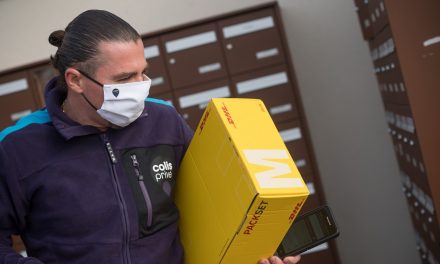
Post and parcel companies must meet the needs of “digitally connected” consumers
Digitally connected consumers, looking for lower prices, greater convenience and a seamless experience in buying, receiving and returning products, are forcing parcel companies and postal organizations to rethink their “traditional” delivery methods, according to new research from Accenture. “Armed with social networks, greater choices and rapid reviews of companies and services, these savvy consumers, already driving e-commerce demand, now are forcing increased competition for the ‘last mile’, the literal home stretch in delivery service – to the door, parcel lockers, access points or crowd storage,” claimed Accenture.
Accenture’s study, entitled Adding Value to Parcel Delivery, identified more than a dozen trends impacting parcel delivery service, an industry segment that is projected to grow 9% annually to more than $343bn globally by 2020.
As postal organizations around the world continue to face revenue challenges created by dramatically reduced mail volumes, they are focusing on competitive parcel delivery products, services and supply chains as a means to close the revenue gap. But they will have to pay close attention to what consumers want, if they are to realise the potential of this market.
“Understanding customer needs and creating solutions aimed at improving their delivery experience is an important aspect of gaining market share. That relationship can also be leveraged to sell new services directly to consumers which presents additional revenue opportunities,” said Brody Buhler, who leads Accenture’s global post and parcel industry practice.
“Successful companies and postal organizations harness the power of today’s consumer to remain relevant while capturing increased market share.”
“Consumer convenience and cost reduction have been the primary objectives guiding the change. Traditional postal organizations, already locked in competition with private delivery companies now are facing the possibility of companies like Amazon creating their own delivery supply chains combined with the very real threat of share economy start-ups like Uber. New models and consumer expectations driven by m-commerce will radically change the delivery landscape.”
The study also determined that business to consumer (B2C) will continue to grow in significance across geographies over the next five years. By 2020, reported Accenture, B2C will surpass business to business (B2B) in terms of parcel volumes in Asia and in North America. B2C will continue to grow revenue at an estimated 6% per year in North America, 5% per year in Western Europe and nearly 14% per year in Asia-Pacific between 2015 and 2020.
This shift from B2B to B2C is also leading to high volatility in demand. The United Kingdom saw a 39% increase in parcels and an 86% increase in cross-border shipments on Cyber Monday in one year. China experienced a similar spike on Singles Day in 2014, when 323 million shipments were delivered, more than 10 times greater than the average daily shipping volume.
The research also shows that firms around the world are scaling up to meet future consumer demand, expanding capacity and modernizing networks in the parcel delivery business:
- DHL is investing €750m to build Germany’s largest parcel processing plant in Hessen
- FedEx Ground will spend $1.2bn to finance 70 expansion projects
- Yamato Transport Co. has allocated 140bn yen on its processing warehouse near Tokyo’s Haneda airport
- Australia Post is doubling capacity at Sydney and Melbourne parcel facilities as part of a AUD2bn investment.
These investments are being made to remain competitive in the face of new entrants in last-mile delivery and with the understanding that delivery experience is a key variable for customer satisfaction. The study determined that 80% of retailers see a positive and measureable impact on customer satisfaction by offering multiple delivery options to shoppers and 77% of this group aim to increase investment in delivery over the next two years.
Consumers now have many more choices and options for delivery services, argued Accenture, and successful courier-express-parcel (CEP) companies will focus on the recipient and deliver on consumers’ wish lists:
- Delivery control: Consumers are demanding a better last mile service that keeps them in control of how, when and where their parcels are delivered.
- Delivery locations: As choices broaden, consumers want new delivery options such as lockers or pickup locations that enable a secure, 24×7 and sometimes anonymous delivery option.
- Delivery timing: While there is significant investment in speed, CEP companies should focus on giving consumers a range of delivery times (often at different price points) that provides flexibility.
Findings from the study were presented at Post Expo 2015, an exhibition and conference for the world’s postal, courier and express industries which is taking place in Paris this week.












